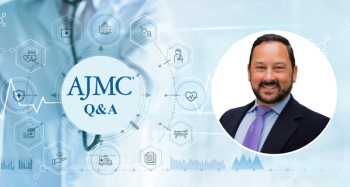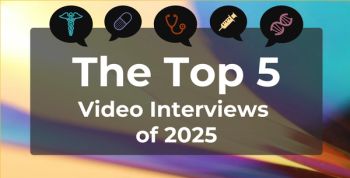
Dr Barbara McAneny: Success in OCM Seems Like a "Random Event"
Practices that had experience with the COME HOME community oncology medical home model didn’t perform any better in the Oncology Care Model (OCM) than other practices, explained Barbara L. McAneny, MD, president of the American Medical Association.
Practices that had experience with the COME HOME community oncology medical home model didn’t perform any better in the Oncology Care Model (OCM) than other practices, explained Barbara L. McAneny, MD, president of the American Medical Association.
Transcript
For the practices in the Oncology Care Model that have succeeded, what are the trends we are seeing in the field? Did they make certain changes or were they already doing all the right things?
I had the Innovation Center [Center for Medicare and Medicaid Innovation] grant of COME HOME, which stands for Community Oncology Medical Home, and we thought that those 7 practices would be extremely well-positioned to do a great job for OCM. OCM built on some of the things that we learned about how to do a better job delivering care to patients, how to do that coordinated care, provide those same-day visits and other things that kept patients out of the hospital, and therefore save money. We saved a lot of money in COME HOME per patient. Those practices have not done any better than others. It seems to be a random event and I think there are 2 parts to that. There’s probably more than 2, but there are 2 parts.
The first is that as CMS has created their target prices that we’re to aim for they are not sufficiently accurate. So, we took all of the data we had from the COME HOME, from 16,000 sets of claims and we compared what patients actually cost the system to what the OCM target was and we found that the correlation factor, the R2 value, was 0.33. If you flip a coin, it should be 0.5. If you have a model that you’re going to base an economic decision on, it should be better than 0.75. So, the fact that the value was 0.33 tells me that it’s more or less a random event whether you’re going to hit that target. And I’m not willing to bet my practice on a random event.
If we do, if practices took 2-sided risk and then had to pay back money to Medicare because a patient had one of these strange reactions to some of the personalized medicine drugs or some other untoward side effect or even got hit by a bus on the way to the office, you would have an event that would be incredibly expensive that would be more than what the practice could afford to pay back.
So, one of our concerns with 2-sided risk is that you may lose a certain fraction of the practices who will either go bankrupt, have to sell to a hospital system to survive, in which case the cost of everything doubles, or just not be able to continue to participate in that model.
Newsletter
Stay ahead of policy, cost, and value—subscribe to AJMC for expert insights at the intersection of clinical care and health economics.








